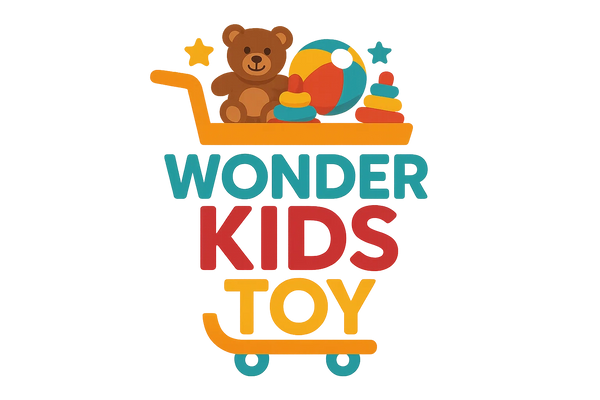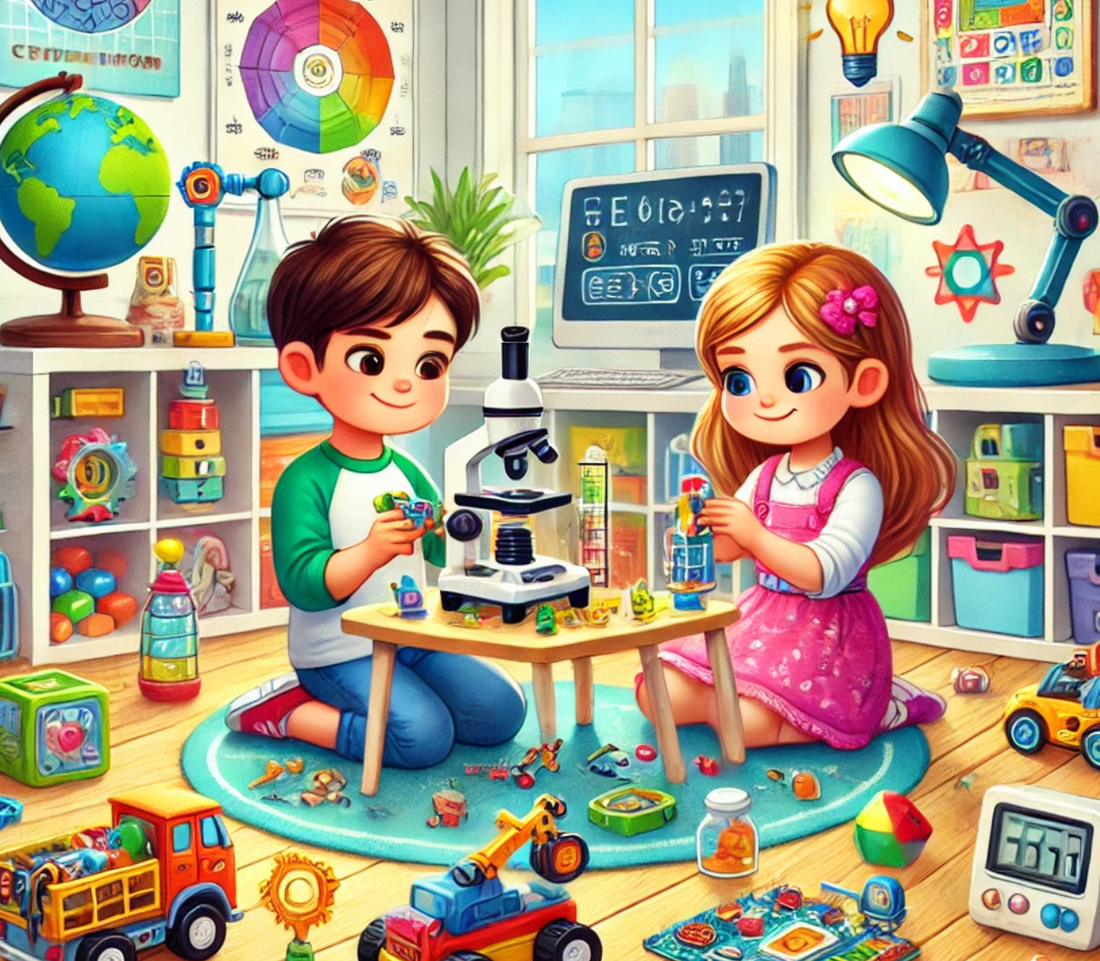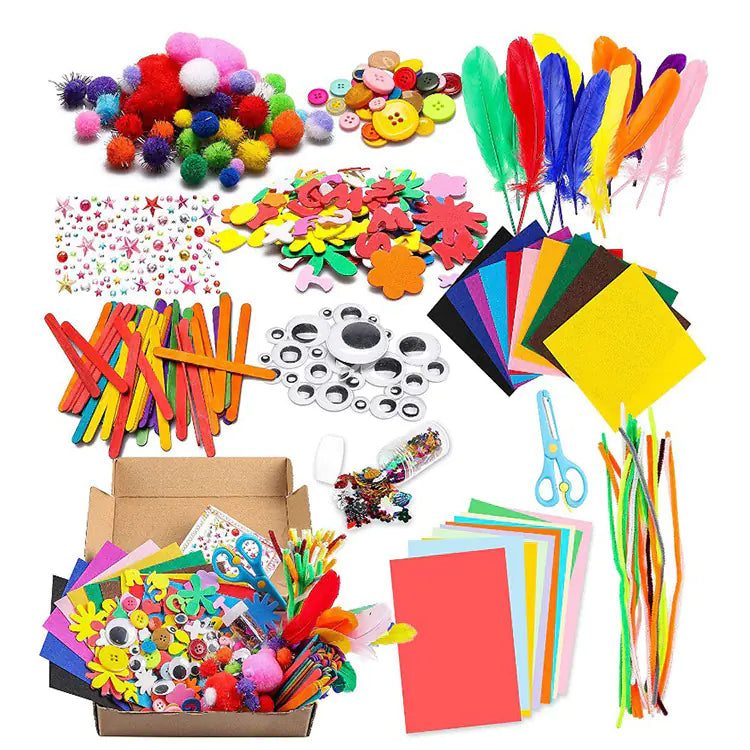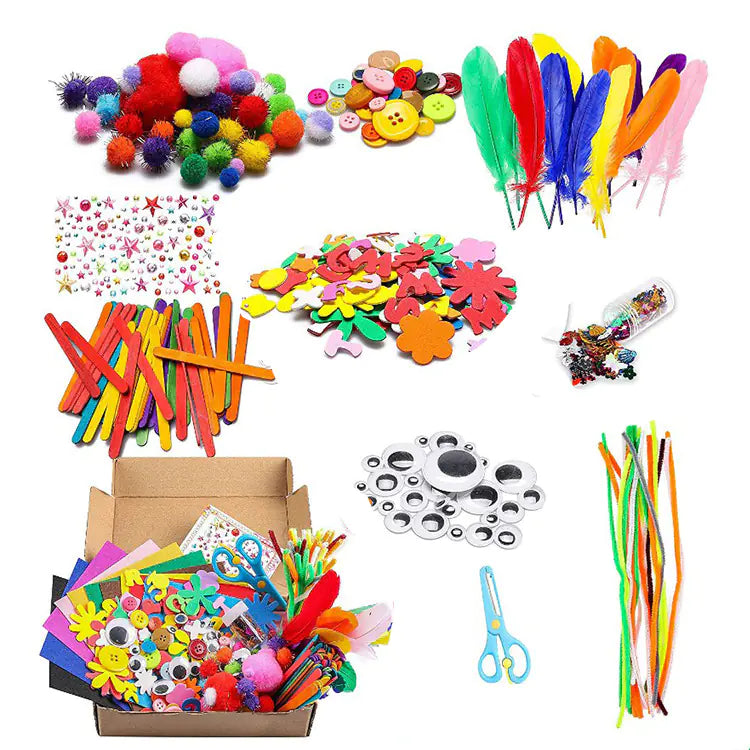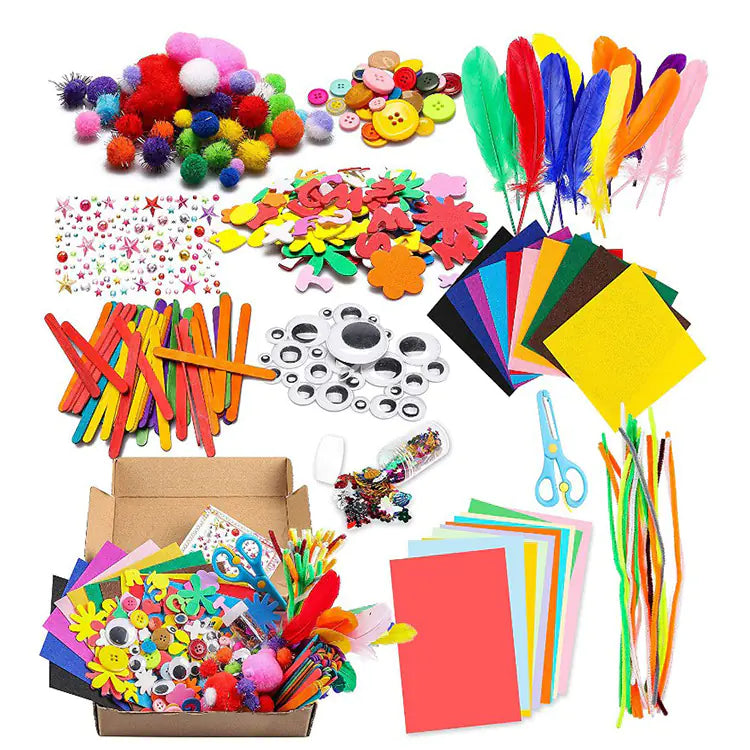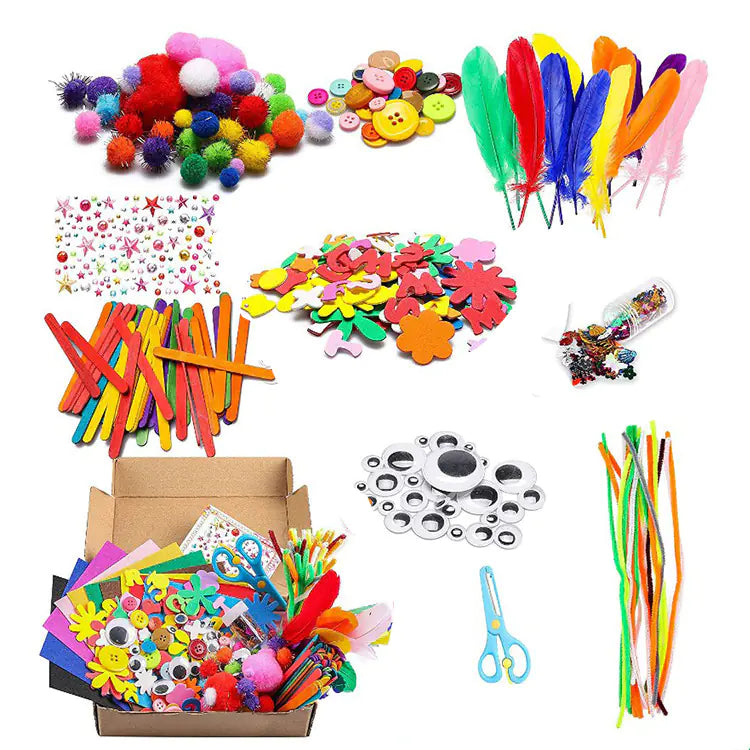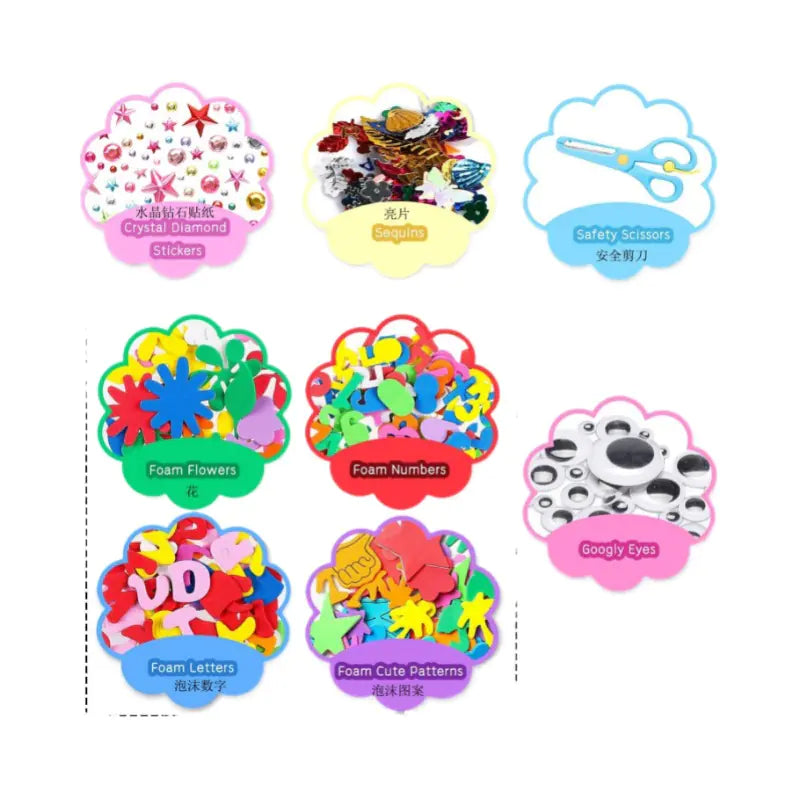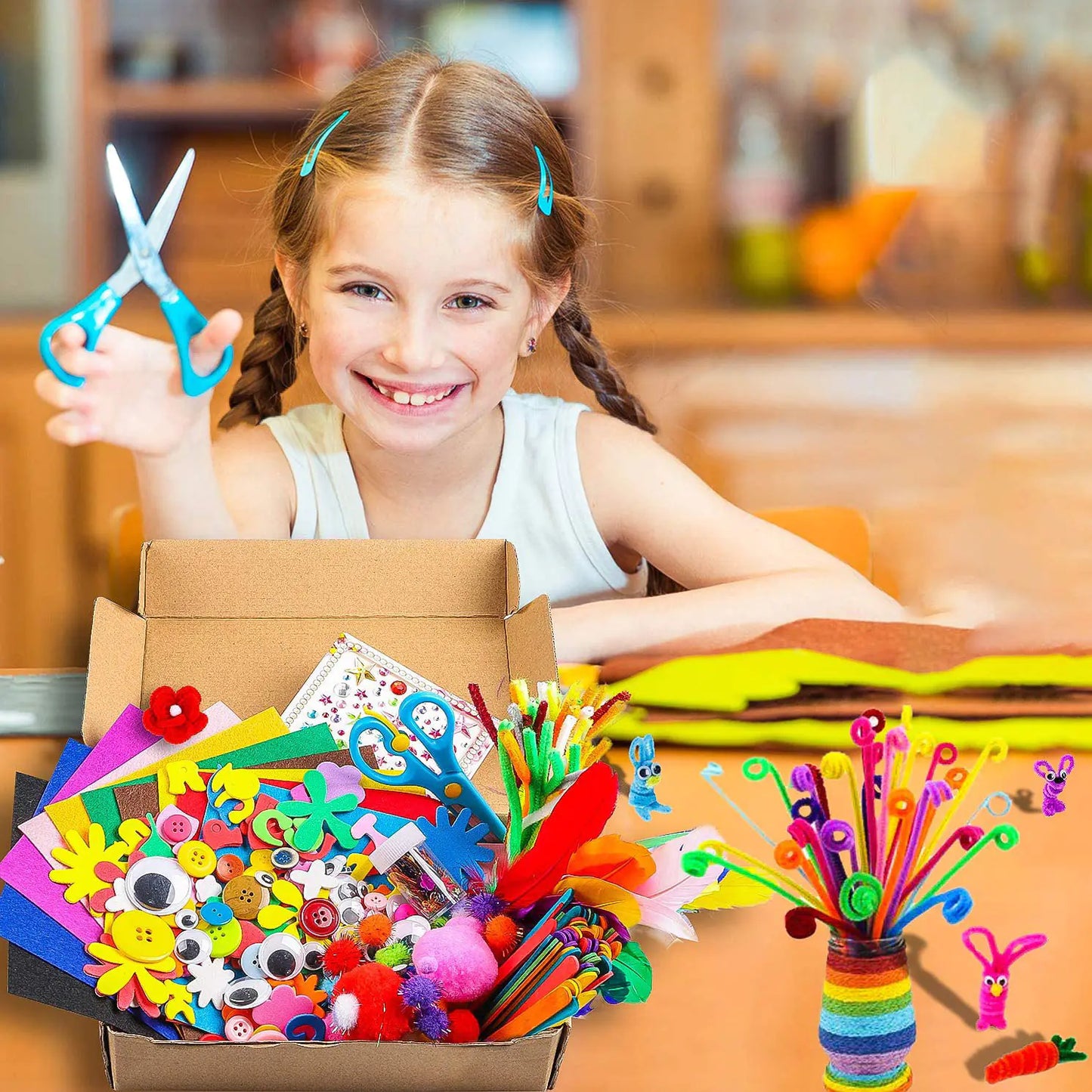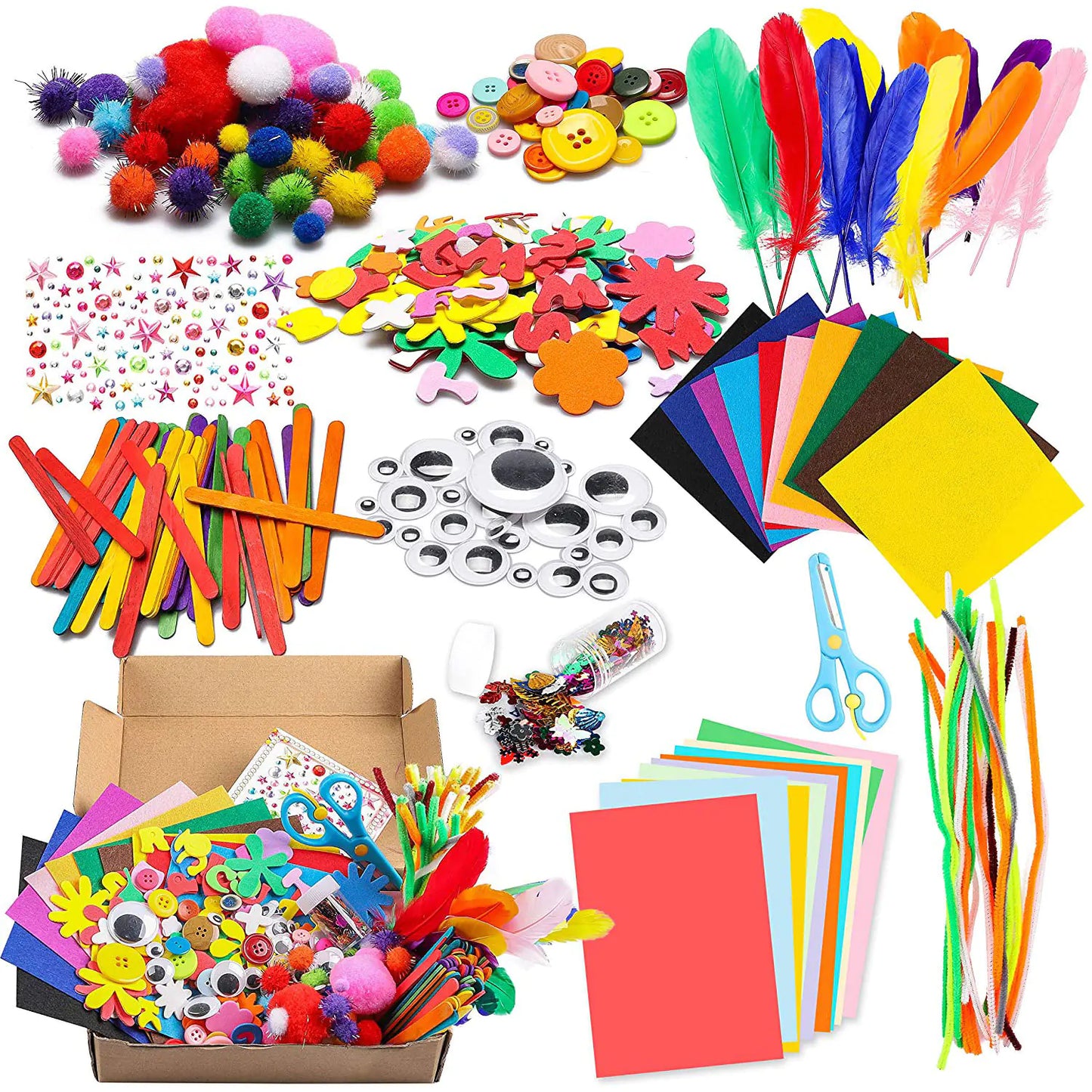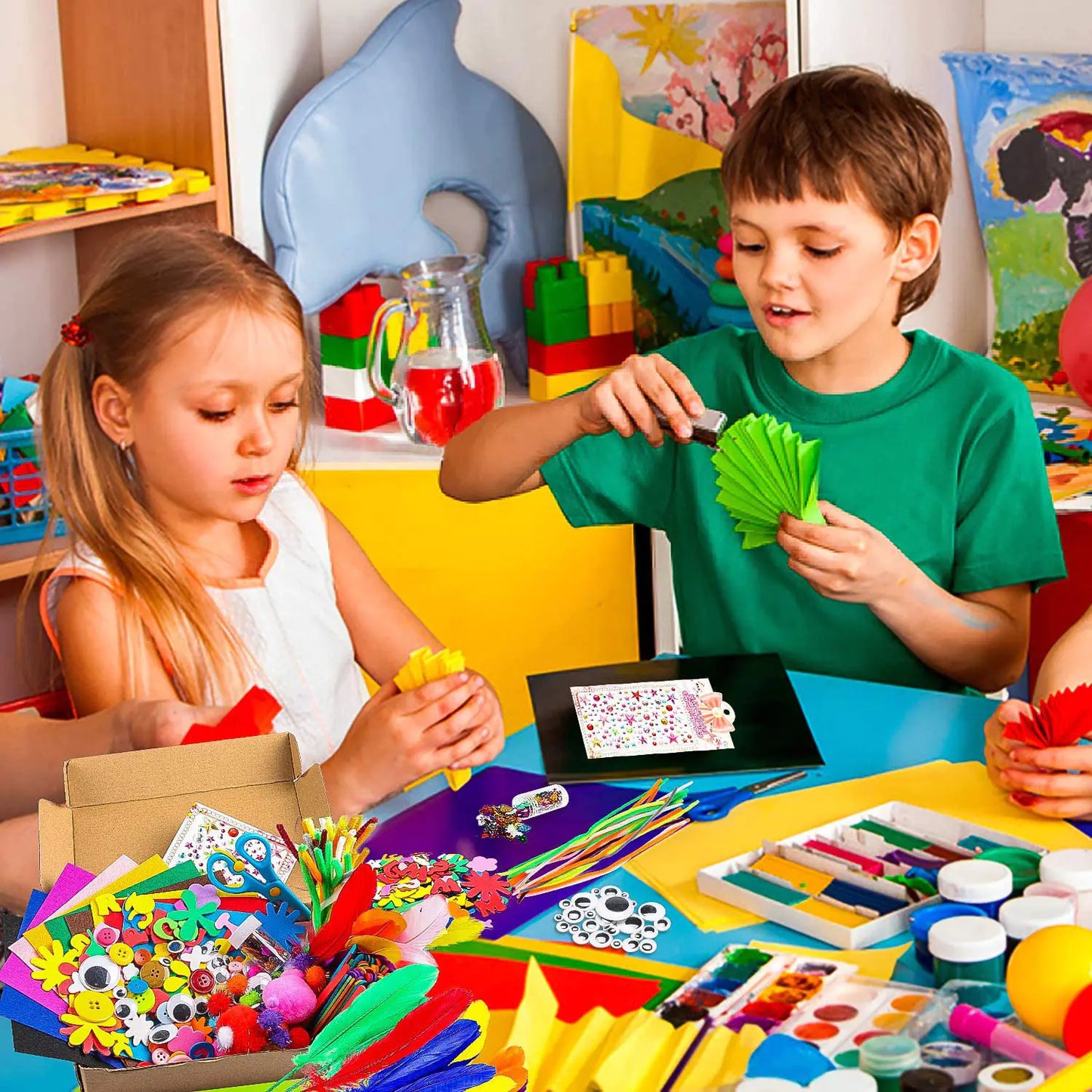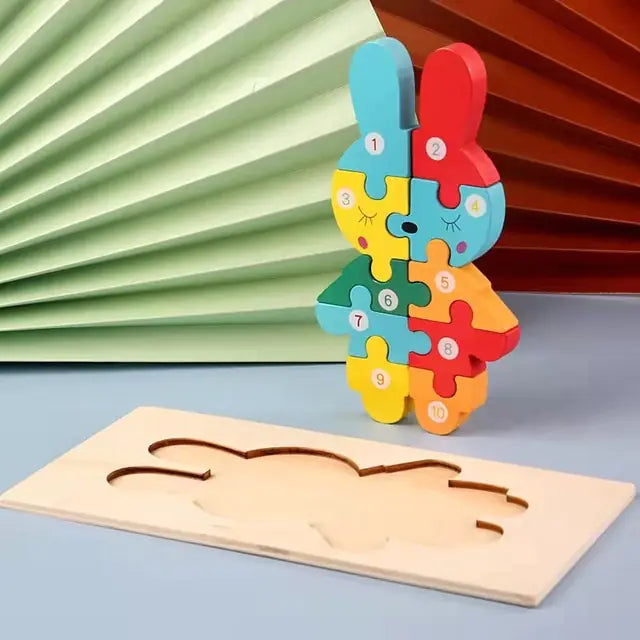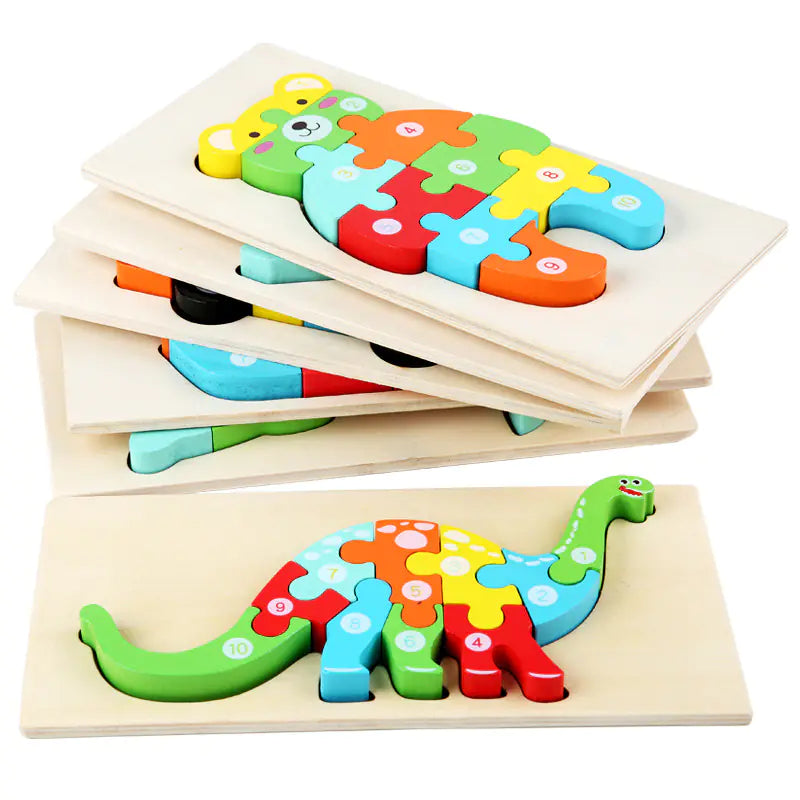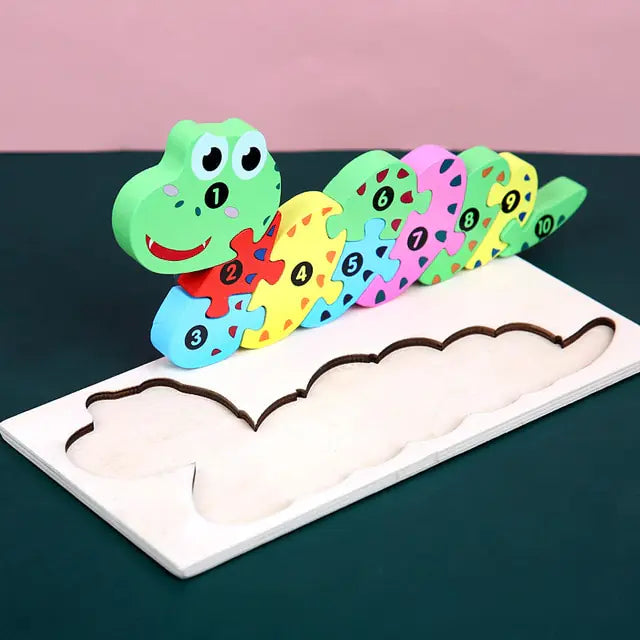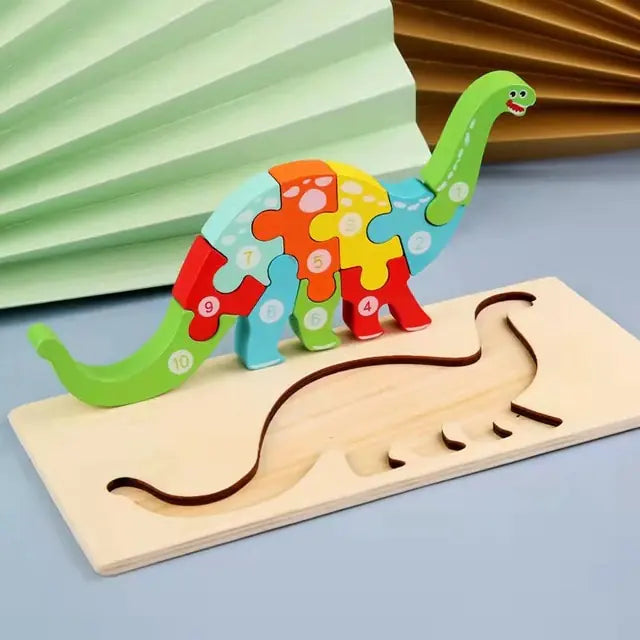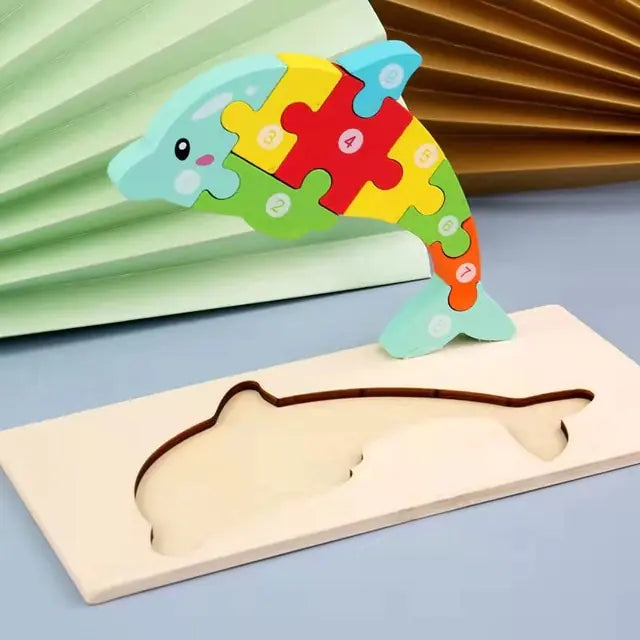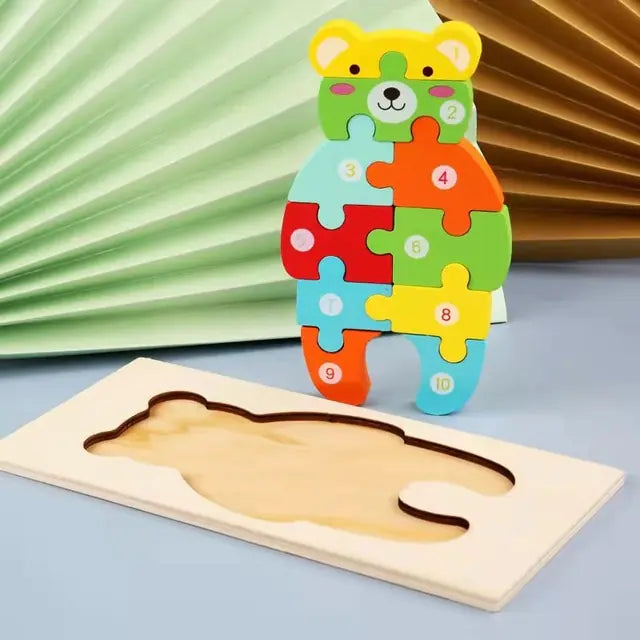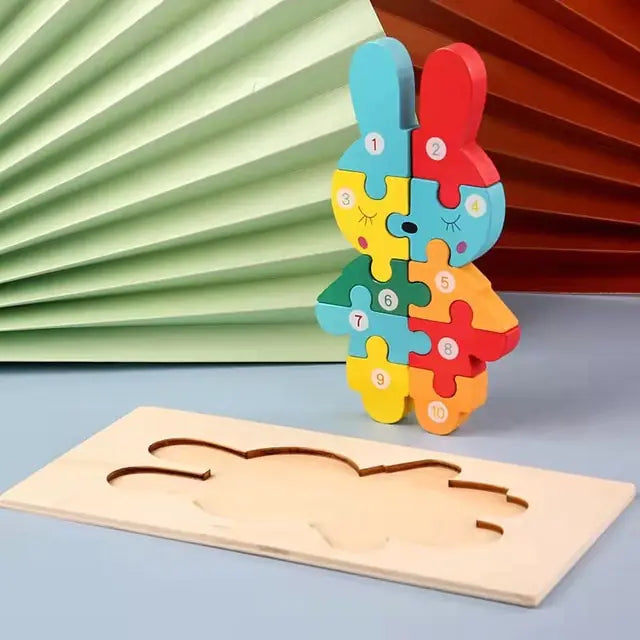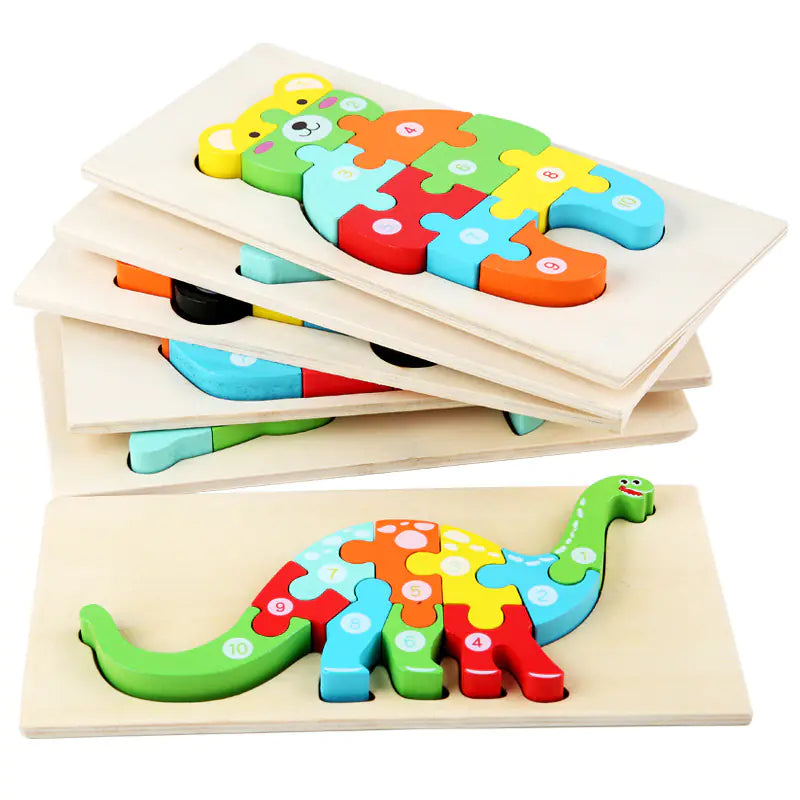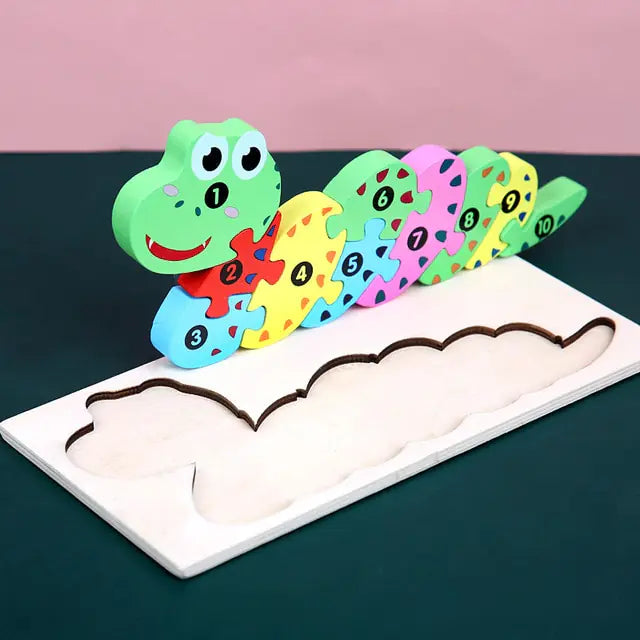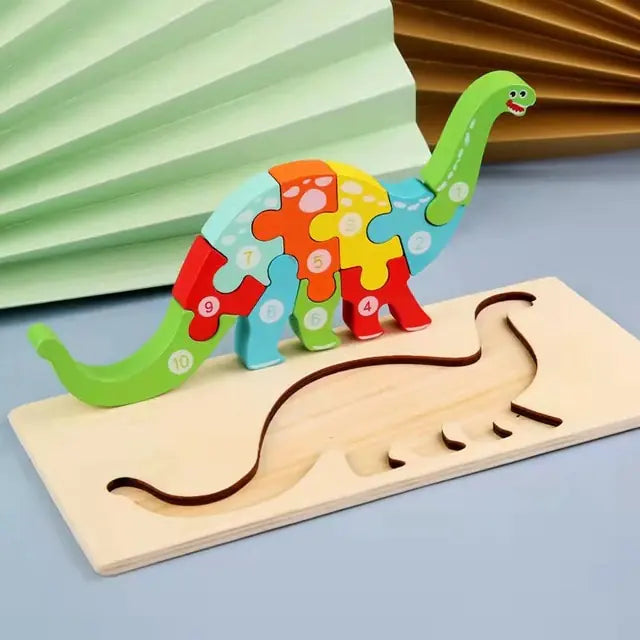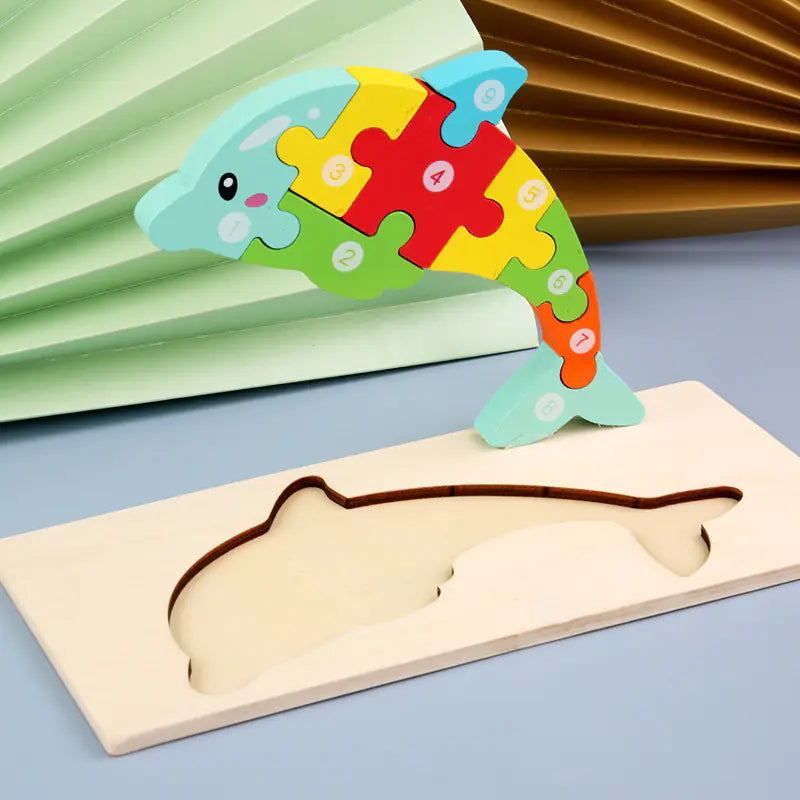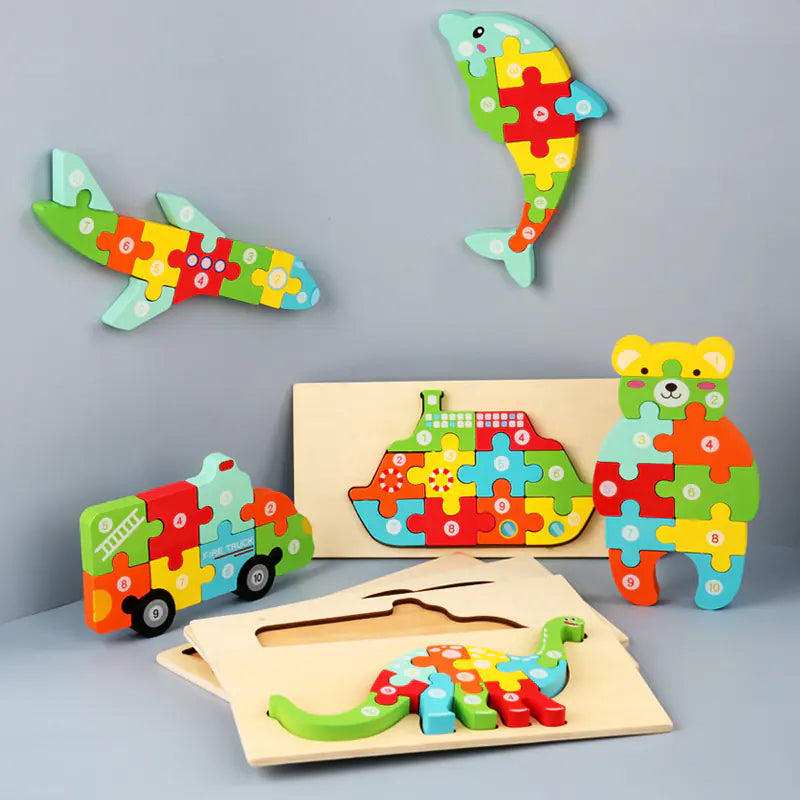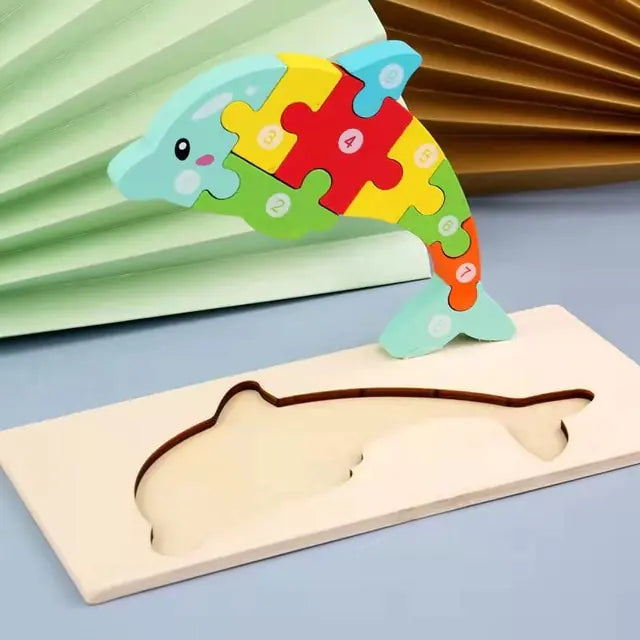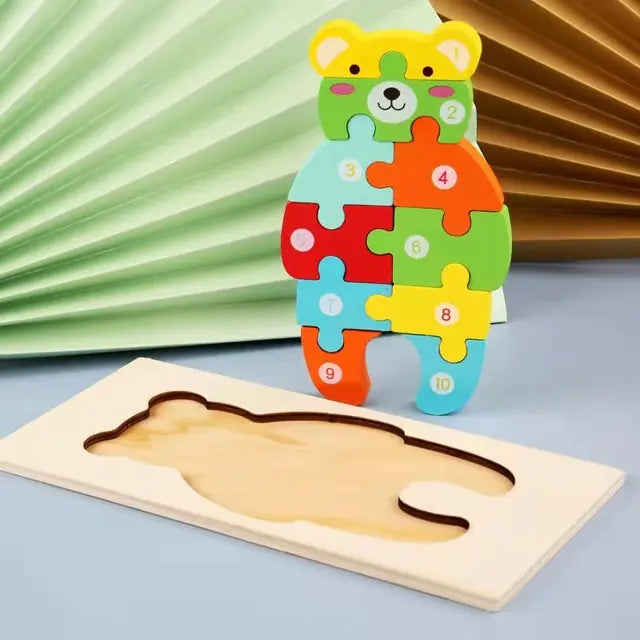Best STEM Toys for Kids: Enhance Learning Through Play
STEM toys for kids make learning fun, giving kids hands-on activities that spark curiosity and creativity. These toys emphasize science, technology, engineering, and math, which children need to learn for survival in the real world today.
From building blocks to coding kits, they encourage young minds to explore concepts fun and engagingly. Most are tailored for multiple age ranges, so kids of all ages can tackle challenges that match their current level.
Parents and educators alike appreciate these toys for their ability to promote self-directed play, all while developing cooperation and collaboration. Whether building a robot or trying their hand at simple physics, STEM toys take the sting out of learning and turn it into fun, hands-on activities.
They are some of the best vehicles for developing a solid foundation of STEM, creativity, and collaboration—all critical skills for our kids’ futures.
What Are STEM Toys
Definition of STEM Toys
STEM toys are, by definition, educational tools created to help develop skills and knowledge in science, technology, engineering, and math. These toys are more than just fun to keep children entertained; they encourage STEM learning through creativity and exploration.
Construction toys such as LEGO Technic and magnetic building tiles reinforce children’s understanding of engineering concepts. At the same time, coding games and robot kits make learning programming basics fun.
STEM toys are distinguished by their ability to adapt to various age groups and skill levels. They cover a broad spectrum, from basic coding puzzles for toddlers to high-tech robotics kits for tweens and teens.
These toys can hugely benefit kids as young as 3 years old. They develop spatial reasoning and increase hand-eye coordination. By combining play with learning, STEM toys appeal to children's innate curiosity.
Purpose of STEM Toys for Kids
STEM Toy Goal
As mentioned, the primary goal of STEM toys is to provide fun and engaging learning experiences. Additionally, they create a crucial bridge between theory and practice.
That’s what makes it possible for kids to explore thrilling fields like coding, robotics, and environmental science in an honest, hands-on way. Additionally, toys that mimic real-world systems, like coral reef ecosystems, can help foster an ecological consciousness from a young age.
STEM toys help develop critical thinking, creativity, and problem-solving skills, which are essential for success in the 21st century.
Benefits of STEM Toys for Kids
1. Boost Creativity and Imagination
STEM toys encourage children’s natural curiosity. They offer kids the chance to explore their imagination without boundaries. Unlike other toys, STEM toys promote open-ended play, so kids can construct robots, design buildings, or invent circuits.
For example, a toy like LEGO Mindstorms encourages imaginative designs and problem-solving, allowing kids to invent something unique. This kind of creative play equips them to approach problems creatively, a critical ability in STEM professions, where new ideas and discoveries move the world forward.
Creativity is not limited to artistic pursuits but is an essential component of problem-solving and approaching things from new angles.
2. Improve Problem-Solving Skills
STEM toys challenge kids to think critically and solve real-world problems. Consider a puzzle-based coding toy, for example—it challenges them to use logic and trial-and-error to solve problems.
This process fosters critical thinking and resilience as children learn to pivot when their first designs fail to function. These experiences teach children how to approach complex challenges, a skill that will benefit them throughout life, whether they’re tackling school assignments or workplace tasks.
3. Foster Critical Thinking Abilities
Analyzing and evaluating are the essence of STEM toys. STEM toys such as science kits stimulate inquiry-based learning, motivating kids to ask questions and test hypotheses.
For instance, as kids experiment with a chemistry set, they learn about the properties of materials and cause-and-effect relationships. This kind of play prepares them to make thoughtful, evidence-based decisions, a critical ability for success in school and life.
4. Enhance Collaboration and Teamwork
Many STEM toys are designed for group use, which can teach kids valuable social skills such as communication and listening. Whether building an entire neighbourhood with friends or a rocket with family, kids learn to share their ideas and respect others’ perspectives.
For example, a collaborative robotics group project encourages collaboration and teaches students that working together often produces better outcomes. These experiences help prepare kids to work in teams, as they usually must in school and their future careers.
5. Build Confidence and Independence
STEM toys encourage children to be proactive with their education. For example, finishing a challenging engineering design project can provide a feeling of achievement, which can develop children's confidence.
Beyond collaborative learning, these toys promote independent problem-solving, where children learn to believe in themselves. Skills like those are priceless, allowing kids to be more independent and resourceful.
6. Encourage Early Interest in STEM Fields
Getting kids excited about STEM topics early is key to developing the next generation of innovators, educators, and inventors. Toys such as coding games or biology kits bring these subjects to life, making them exciting and more relatable.
Early exposure can lead to hobbies that evolve into career paths, especially as STEM job opportunities proliferate. For example, a kid who loves to tinker and create with his STEM toys could become an engineer or scientist.
7. Develop Fine Motor Skills
Whether they’re building sets or circuit boards, most STEM toys involve kids moving little pieces around. This kind of tactile, hands-on engagement enhances hand-eye coordination and dexterity.
Putting together a model car improves your dexterity. What’s more, it instills a sense of patience and attention to detail, qualities that serve you in school and everyday life.
8. Strengthen Cognitive Development
STEM toys stimulate active brain engagement, enhancing memory, concentration, and critical thinking skills. Hands-on fun, such as planning a marble run, encourages three-dimensional thinking and problem-solving.
These toys make kids observant and experimental. Through play, they learn essential principles in physics and engineering, developing an understanding that will set them up for academic success in the future.
Types of STEM Toys and Activities
Coding and Robotics Tools for Kids
Coding toys are a fun, hands-on way to learn the basics of programming. Options like the Sphero Bolt teach kids to write simple codes by controlling a robotic ball that moves through physical space. This immersive approach is more effective than passive forms of learning, like lectures.
Robotics kits like Lego Education’s Spike Prime combine coding and building. This allows kids to design, create, and program their dream robots! Marty the Robot V2 is a bipedal humanoid robot powered by 9 servo motors. Children can program outstanding actions like walking, kicking, and even eyebrow wiggling!
These resources ignite kids’ imaginations and arm them with the critical tools they’ll need in an increasingly technology-centric society.
Interactive Building and Construction Sets
Though these building sets promote creativity, they are also great tools for sharpening engineering skills. Construction-based toys, such as magnetic tiles or Lego sets, allow children to create structures of their imagination, developing strong spatial reasoning and problem-solving skills.
Lego Education’s Spike Prime is especially popular for its creativity-inspiring versatility. It allows children to make anything from robots to elaborate creations. Because most kids want to break stuff and start building it back up again, these toys speak to their very nature, encouraging tactile learning.
Science Kits for Hands-On Experiments
Science kits excite children about chemistry and biology by enabling them to watch experiments unfold. Kits that allow them to conduct simple chemical reactions or experiments to study plant growth foster inquiry-based learning.
These hands-on activities help kids see the practical application of science, helping them connect the dots between the abstract and real-world concepts.
Creative Arts and Craft-Based STEM Toys
Craft-based STEM toys combine artistic expression with technical skills, teaching children that creativity is essential to invention and discovery. Another kit merges circuitry with creative projects, letting kids craft light-up greeting cards or robotic masterpieces that move.
This creative activity combines critical thinking and creativity; what a fun way to learn!
Educational Games and Puzzles for Learning
Games and puzzles turn otherwise monotonous concepts such as math and logic into an enjoyable way to learn and understand them. Examples include board games to learn fractions or puzzles to develop critical thinking.
The Represented Collective also provides puzzles designed for younger learners to ensure students aren’t presented with challenges beyond their capability.
Nature Exploration and Outdoor STEM Activities
Outdoor, STEM-related activities help foster a child’s natural curiosity about the world around them. Activities such as gardening help children learn about biology and sustainability, while nature scavenger hunts promote critical observation skills.
Reading stories set in coral reefs or other ecosystems expands this relationship, helping to build an understanding of the environment at an early age.
Age-Appropriate STEM Toy Options
STEM Toys for Toddlers and Preschoolers
For the littlest kids, STEM toys should encourage imagination and play. Playthings like stacking blocks, shape sorters, or magnetic tiles teach foundational math and engineering competencies. Sensory-based toys, like water play kits or textured block puzzles, encourage tactile learning and exploration while developing fine motor skills.
The Ambessa Play DIY Flashlight, for children aged 3+, combines hands-on art projects with an introduction to circuits and the science behind them. Foundational skills such as problem-solving and pattern recognition are critical at this age, laying the groundwork for more advanced learning later.
STEM Toys for Elementary School Kids
Elementary-aged kids are best served by toys that engage their imagination and creativity while challenging them just enough. Sets like the LEGO Technic line (ages 4 and up) and Lego Education’s Spike Prime (ages six and up) encourage engineering and coding through building tasks.
Science kits like The Little Lab: Fantastic Science (ages 4 and up) engage curiosity with hands-on experiments. Other tools, such as the Kindle (ages 5 and up), combine learning and tech. These toys go hand-in-hand with school curricula, helping make STEM engaging and authentic.
STEM Toys for Preteens and Teens
Advanced toys that explore STEM fields in more detail are an excellent option for older children. Bill Nye’s VR Chem Lab takes users age 5 and older into interactive science experiences. At the same time, the Loog Mini Electric Guitar introduces young children (3 and up) to the engineering principles that underlie all musical instruments.
Preteens (ages eight and up) can explore the Technic line for complex builds, and teens can prepare for future careers through toys that bridge academics and real-world applications.
Features to Consider When Choosing STEM Toys
Safety and Durability of Materials
There’s nothing wrong with wanting to protect your child. Look for toys made from non-toxic and BPA-free materials. This is crucial for younger children who often mouth objects.
Durable build quality is just as crucial, as these toys are bound to be banged around while in action. For example, if blocks or modular circuits are used, they must be sturdy enough to be repeatedly built and knocked down.
Look for certifications such as ASTM or CPSIA compliance to ensure the toys are safe and meet safety standards, which will provide parents with peace of mind.
Educational Value and Learning Goals
STEM toys must provide value beyond fun and be serious learning tools. Look for toys that teach concepts applicable to the real world!
Explore coding kits that use color-coded circuits and mind-blowing science kits that immerse you in the wonders of chemistry. For instance, a robot-building kit that combines mechanical assembly with basic programming fosters creativity, problem-solving, and critical thinking.
Focusing on one skill area, such as math or engineering, means they can be designed to meet educational objectives without stifling students’ curiosity.
Age Suitability and Complexity Levels
Selecting toys suitable for your child’s developmental stage helps ensure they are used more purposefully. Toys for younger kids should mostly be simple puzzles or problem-solving tasks, whereas a robotics kit for older children should include lots of different projects.
The optimal level of challenge keeps kids engaged but not overwhelmed, pushing the development of their skills.
Engagement and Fun Factor for Kids
STEM-focused toys should be fun and encourage exploration. Toys like large-scale magnetic building sets or tabletop coding games easily capture kids’ attention while fostering creative exploration.
When children have fun through play, they play for longer periods, which helps them explore more deeply and keep concepts longer.
Encouragement of Open-Ended Play
Open-ended toys, like building sets or creation kits, can encourage imagination because they allow limitless creativity. These toys allow kids to explore and test their ideas, fostering creativity and future invention.
For example, modular toys with interchangeable pieces foster creativity and customization.
How STEM Toys Support Long-Term Development
STEM toys are more than just fun and games. They provide a foundation for important skills that will continue to serve kids long after they’ve grown up. Weaving play into education, these toys provide lasting benefits that mold developing minds.
Preparing Kids for Future Careers
STEM toys give kids a leg up by familiarizing them with coding, programming, and engineering ideas. Early exposure to these fields can help spark a long-lasting interest in STEM careers, which can pave the way to thrilling careers in STEM-related areas like robotics, software engineering, or environmental research.
Consider a child playing with a coding robot—she’s learning fundamental programming logic. Meanwhile, through the creative problem-solving process, they fall in love with the invention journey. These toys introduce technology and engineering concepts in an approachable way, allowing kids to gain confidence in applying complex concepts in real-life situations.
This hands-on experience inspires children and develops key skills, such as critical thinking and logical reasoning, that can be applied in real-world situations.
Building a Lifelong Love for Learning
STEM toys foster natural curiosity and excite kids to understand how the world works. Affirmative interactions with these toys will make children relate the quest for knowledge with fun and excitement, taking away the stress usually associated with learning.
A simple building kit, for example, enables kids to play around with designs and structures, sparking an interest in learning and exploring more. At the same time, parents can support their children’s pursuits by giving them toys that align with those interests.
STEM toys encourage the practice of independent learning early on.
Enhancing Adaptability to New Challenges
STEM toys foster a love of learning through play and encourage children to tackle obstacles with an indomitable spirit. Activities like building a circuit or designing a working model require trial and error, helping children become comfortable with setbacks.
These experiences encourage creativity and risk-taking, which are critical for innovation and problem-solving in our rapidly changing society. By learning to stick with problems, children cultivate a growth mindset that prepares them to face new challenges with confidence and creativity.
They understand that mistakes are a necessary step on the journey, transforming every challenge into a new development opportunity.
STEM toys provide children with an enjoyable method of education and development. They ignite a desire to learn, develop critical thinking, and foster real-world exploration. From coding toys to building sets, these toys provide kids of all ages and interests with the perfect stem toys. They take the stress out of learning and turn it into a fun exploratory journey.
Consider your kid's age, interests, and learning objectives when selecting a STEM toy. Seek out toys that provide flexibility, ease of building, and space to innovate. A STEM toy could spark creativity and confidence for a lifetime with the right choice.
Build the STEM skills that will help your child thrive while having a great time. Begin your journey with STEM toys today and discover the impact they can have on learning and play.
Frequently Asked Questions
What are STEM toys?
STEM toys are learning resources that help children understand and appreciate the importance of science, technology, engineering, and mathematics. They accomplish all this in a fun, engaging manner, inspiring innovation, imagination, and ingenuity.
What are the benefits of STEM toys for kids?
STEM toys develop crucial problem-solving skills, encourage creativity, and inspire curiosity—the perfect trifecta for young minds. Plus, they prepare kids for future careers by building their science, technology, engineering, and math skills.
What types of STEM toys are available?
STEM toys range from robotics kits and building blocks to coding games, science experiment kits, and math puzzles. Each type is designed to develop various specific skills, transforming the learning experience into an engaging and enjoyable journey.
Are STEM toys appropriate for all ages?
Indeed, there are STEM toys for all ages, from toddlers to teens. Pick age-appropriate toys to keep kids safe, engaged, and challenged at the proper levels.
How do I choose the best STEM toy for my child?
Think about your child’s age, interests, and skill level. Consider toys with easy-to-follow instructions, high-quality materials, and elements that inspire creativity and critical thinking.
Do STEM toys help with long-term development?
You betcha, STEMie. STEM toys help develop critical thinking skills and collaboration. They help students develop a growth mindset necessary for lifelong learning and success in any career.
Can STEM toys improve my child’s academic performance?
Sure, STEM toys teach you science, math, and technology, but they do it in a hands-on way. Not only do they make learning fun, but they provide hands-on experience that increases comprehension and confidence in STEM subjects.
